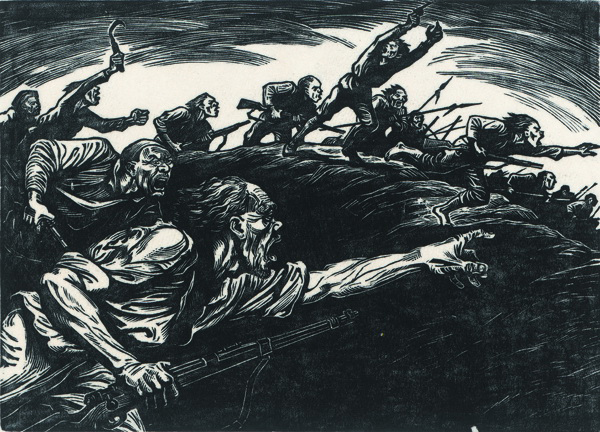International show celebrates engravers' art
An engraving show in Beijing offers art lovers a rare glimpse into one of the oldest art forms in human history.
It features works of more than 60 established artists from the East and West. Some of the works presented are the only copies in existence and have influenced the contemporary art world in fundamental ways.
After two years of preparation, the opening show of Gauguin Gallery, Engraving Show: A Dialogue between the East and West, displays works by Western masters like Pablo Picasso, Georges Braque, Marc Chagall and by the founding fathers of engraving in China such as Li Hua (1919-96) and Gu Yuan (1907-94).
The Beijing-based gallery is co-founded by several senior collectors in China and Canada who have already established a large collection of master artists from the West and East.
Engravings have played a very important role in the art dialog between the East and West, says Sheng Wei, deputy director of Art magazine. Woodblocks from Japan influenced many Western art schools, including impressionism. Chinese artists, in turn, then learned of engraving as fine art from the West, adds Shen.
However, engraving originated in China about 2,000 years ago, and it became popular as a kind of print technology rather than art in China for centuries. In the 1920s, Chinese writer Lu Xun reintroduced engraving as a kind of fine art from the West to China. It quickly stimulated a wave in China's art circles.
"Many Western master painters are good at making engravings. So are many accomplished Chinese artists, like Xu Bing and Fang Lijun," says show curator Kang Jianfei.
But engraving became a propaganda tool during the War of Resistance against Japanese Aggression during the 1930s to 1940s, says Kang. The works of Chinese artists Li Hua and Gu Yuan displayed in the show are of that kind, Kang adds. Both artists presented people's struggles during the war and actual battles via woodcuts.
"Due to the war, many of their works were lost. The works shown here are the only existing ones," says Kang.
Gu stayed in Yan'an - then the heart of the Communist Party - for seven years from 1938 to 1945. He created about 200 engravings depicting the life of the Communist Party in Yan'an, says his daughter, Gu Ancun. One of his works on display shows the workings of a local government office.
"Experts say that my father's works, to some extent, are rare documentaries recording the life of Yan'an, a place seldom shown to the outside world during the war due to political reasons," says Gu.
She once received a thank-you letter from the Franklin Roosevelt family saying the then American president had kept Gu Yuan's woodcuts about life in Yan'an, which were sent as gifts by Zhou Enlai, the first prime minister after the People's Republic of China was founded.
During the war, engravings in China were mainly produced on wood, because of their low cost, and then copied for many editions for promotional uses. However, people had little appreciation of the aesthetic value of such woodcuts, and most were lost in the debris of war. For a long time, this kind of art was associated with politics and revolution.
In the 1980s, contemporary artists in China began to create engravings like what their counterparts in the West had long been doing.
Etching, silk-screen printing, dry-point engraving and colored etching works can be seen in the show's second section: engravings by established Chinese artists. The third section displays the most avant-garde artists' prints.
"The show is the first in China to allow people to appreciate engravings from the West and East. Very comprehensive," says Zhou Jirong, deputy-director of the school of engraving of Central Academy of Fine Arts.
dengzhangyu@chinadaily.com.cn
|
An engraving work by Li Hua (1919-96) depicting the War of Resistance against Japanese Aggression (1937-45).Provided To China Daily |



















